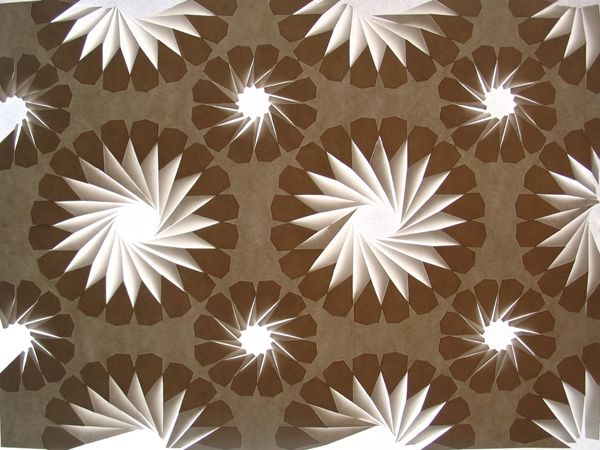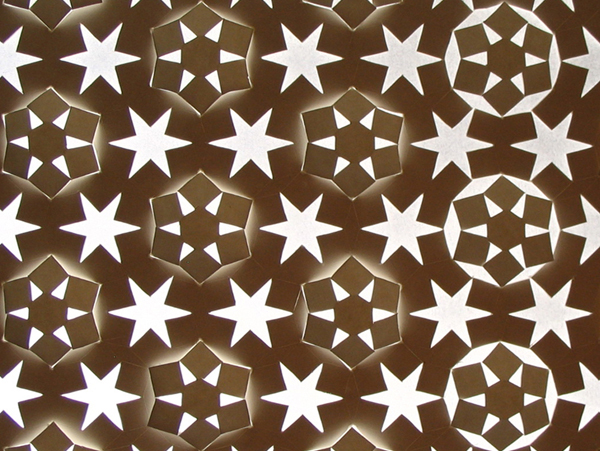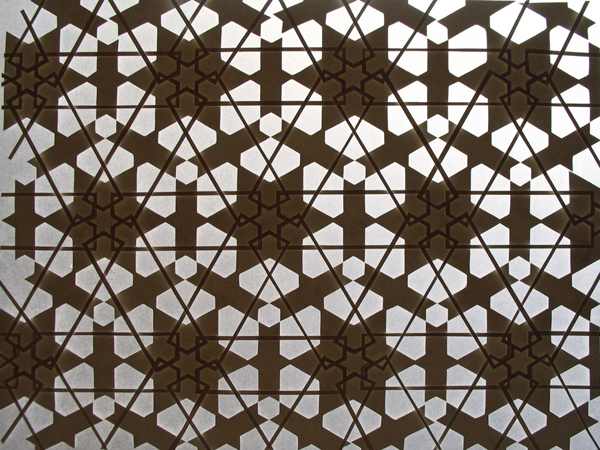Kristina H. Yu
“Project 1”
Photograph of paper bas relief, 20" x 24", 2006.

The icosagon sits neighbor to the dodecagon, each touching only at four point
edges. Four is common to both, the figures of the larger polygon spiral in opposition
to the smaller polygon. The light spills through the center to illuminate on
the bias the sides of the multi-pointed stars.
Kristina H. Yu, Assistant Professor of Architecture, School of Architecture
and Planning, University of New Mexico, Albuquerque
"The images are early forms of geometry that uncover the lines and circles that
inform the Islamic patterns. In the study of Islamic geometries, one sees endless
possibilities that illustrate mathematical ideas as well as the inherent concept
of measurement. The paper project invests line drawings, and bas reliefs with
light that create texture, depth, and shadow of space within a defined raised
surface. The study included the simplicity of paper and light to illuminate
and illustrate complex geometries uncovered in the early 7-13th centuries that
recall the rigor of the geometer's creativity. The bas reliefs are early light
studies for a class studio project to further develop a design for the members
for the South Plains Islamic Center in Lubbock, Texas.
'Geometry is grasping space . . . that space in which the child lives, breathes
and moves. The space that the child must learn to know, explore, conquer, in
order to live, breathe and move better in it'. Freudenthal 1973: 403. Freudenthal
Hans.1905 - 1990. German Mathematician."
Students: Josey Shaw, Ned Laver
Other works by the artist
“Project 2”
photograph of paper bas relief, 20" x 24", 2006.
The hexagon is surrounded by a dance of six pointed stars, squares and parallelograms that help to build the dodecagon. The opacity of the figures emerges and recedes into the space of the bas relief. The beauty of the six pointed star and implied circle by the dodecagon allow the eye to travel across and up and down the image.
“Project 5”
photograph of paper bas relief, 20" x 24", 2006.
The hexagon is exposed as a generator of both linear elements and fields of present and absent spaces. The lines create the textural overlap. The intersection of lines completes the sides of the pentagon. There is an increasing scale of pentagons that operate next to, inset, and overlap each other. The 6 pointed star is made and undone through the same geometry that creates the fields.